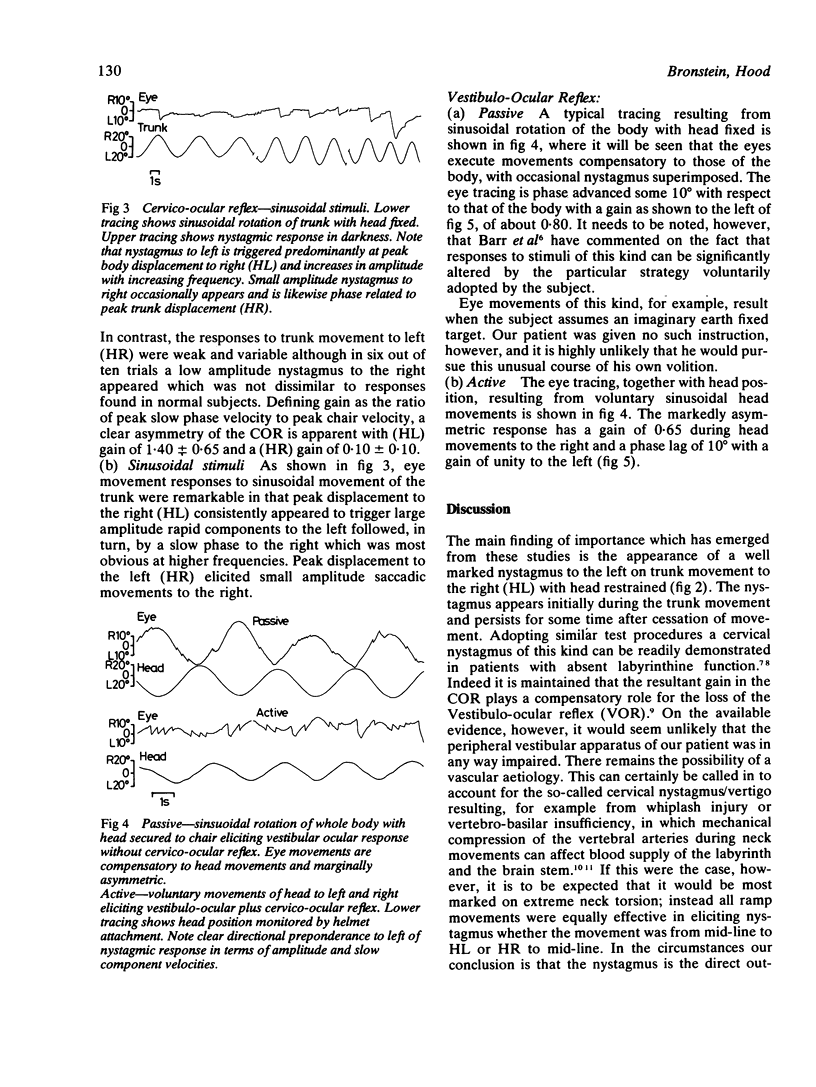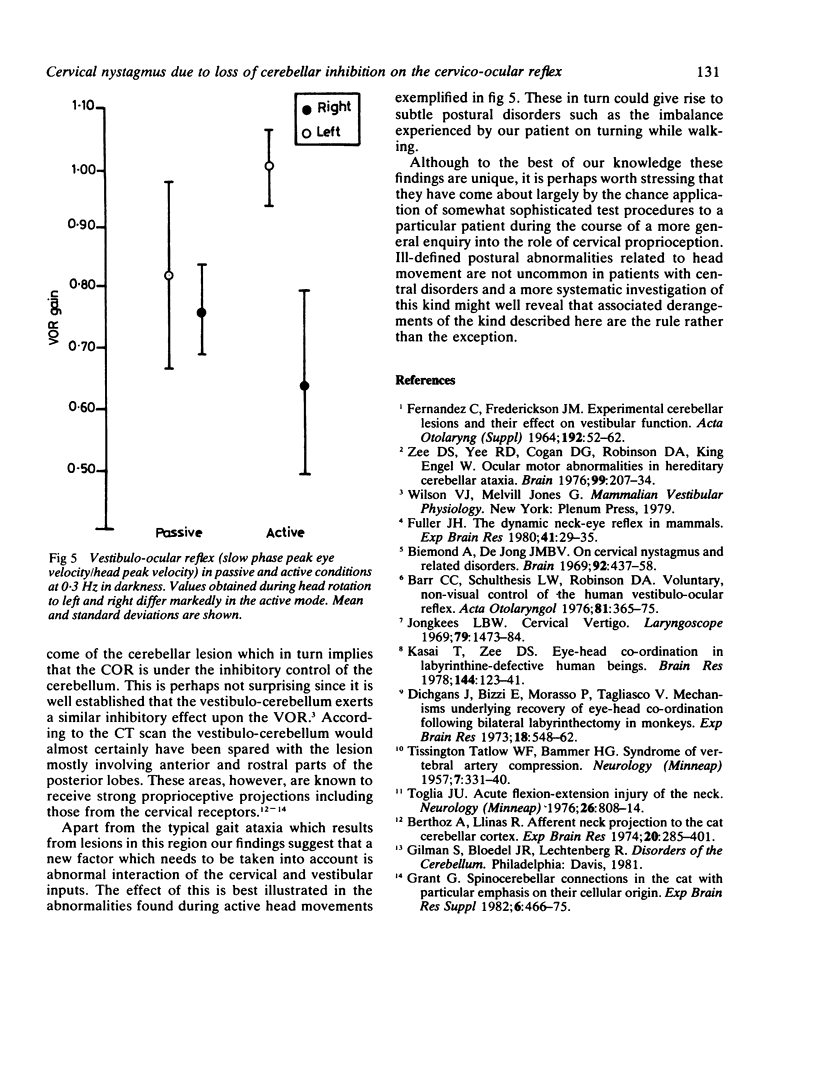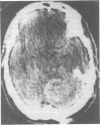Abstract
Studies of the cervico-ocular reflex and the vestibulo-ocular reflex have been carried out separately and in combination on a patient with gait ataxia due to a cerebellar tumour. With the head fixed in space, body rotation to the right (left neck torsion) induced marked nystagmus to the left in darkness. Vestibulo-ocular responses to sinusoidal rotation were symmetrical while the neck was immobilised and asymmetric when it moved freely. It is suggested that the cervical nystagmus seen in this case was the result of removal of cerebellar inhibition upon the cervico-ocular reflex and that abnormal interaction of cervical and vestibular inputs could have played a role in the patient's unsteadiness.
Full text
PDF



Images in this article
Selected References
These references are in PubMed. This may not be the complete list of references from this article.
- Barr C. C., Schultheis L. W., Robinson D. A. Voluntary, non-visual control of the human vestibulo-ocular reflex. Acta Otolaryngol. 1976 May-Jun;81(5-6):365–375. doi: 10.3109/00016487609107490. [DOI] [PubMed] [Google Scholar]
- Berthoz A., Llinás R. Afferent neck projection to the cat cerebellar cortex. Exp Brain Res. 1974;20(4):385–401. doi: 10.1007/BF00237383. [DOI] [PubMed] [Google Scholar]
- Biemond A., De Jong J. M. On cervical nystagmus and related disorders. Brain. 1969;92(2):437–458. doi: 10.1093/brain/92.2.437. [DOI] [PubMed] [Google Scholar]
- Dichgans J., Bizzi E., Morasso P., Tagliasco V. Mechanisms underlying recovery of eye-head coordination following bilateral labyrinthectomy in monkeys. Exp Brain Res. 1973 Dec 20;18(5):548–562. doi: 10.1007/BF00234137. [DOI] [PubMed] [Google Scholar]
- Fuller J. H. The dynamic neck-eye reflex in mammals. Exp Brain Res. 1980;41(1):29–35. doi: 10.1007/BF00236676. [DOI] [PubMed] [Google Scholar]
- Jongkees L. B. Cervical vertigo. Laryngoscope. 1969 Aug;79(8):1473–1484. doi: 10.1288/00005537-196908000-00011. [DOI] [PubMed] [Google Scholar]
- Kasai T., Zee D. S. Eye-head coordination in labyrinthine-defective human beings. Brain Res. 1978 Apr 7;144(1):123–141. doi: 10.1016/0006-8993(78)90439-0. [DOI] [PubMed] [Google Scholar]
- TISSINGTON TATLOW W. F., BAMMER H. G. Syndrome of vertebral artery compression. Neurology. 1957 May;7(5):331–340. doi: 10.1212/wnl.7.5.331. [DOI] [PubMed] [Google Scholar]
- Toglia J. U. Acute flexion-extension injury of the neck. Electronystagmographic study of 309 patients. Neurology. 1976 Sep;26(9):808–814. doi: 10.1212/wnl.26.9.808. [DOI] [PubMed] [Google Scholar]
- Zee D. S., Yee R. D., Cogan D. G., Robinson D. A., Engel W. K. Ocular motor abnormalities in hereditary cerebellar ataxia. Brain. 1976 Jun;99(2):207–234. doi: 10.1093/brain/99.2.207. [DOI] [PubMed] [Google Scholar]



